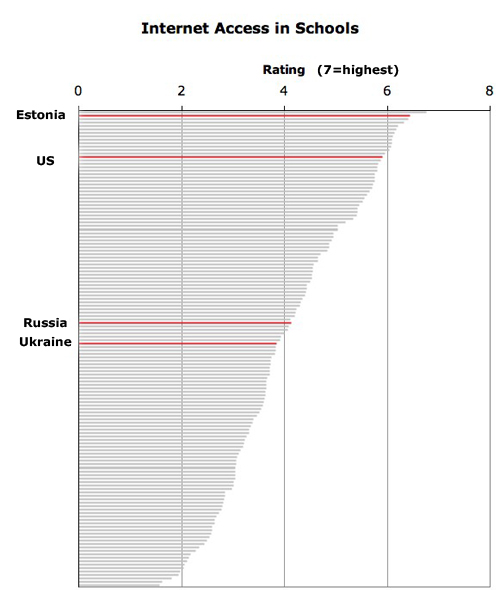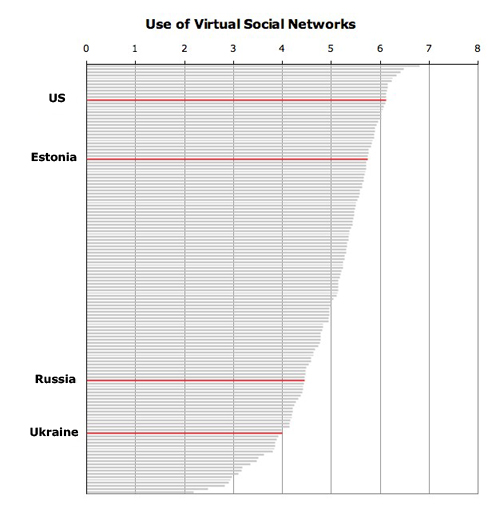To better visualize ICT accessibility and usage in Ukraine, I’ve created a few very rough charts based on data from the World Economic Forum’s Global Information Technology Report from 2010-2011 (find it here: www3.weforum.org/docs/WEF_GITR_Report_2011.pdf), I’ve also highlighted results from the US, Russia, and Estonia for broader context. (I chose Estonia because it is an EU memberstate that is rather democratic and technologically developed despite its Soviet past). The shaded areas represent the other countries on the list (138, in all). As far as I can tell, digital ICT accessibility and usage is not necessarily correlated to GDP. For example, Internet users in Zambia, Mongolia, and Madagascar all utilize virtual social networks more heavily than Ukrainians. Apparently, respondents in Senegal felt that there was better Internet access in their schools than did their Ukrainian counterparts. Bolivia enjoys a faster international broadband speed than Ukraine, etc. Continue reading to see the charts.
Here we go…






As we can see, in comparison with other developed economies (post-Soviet and non- post-Soviet), ICTs in Ukraine are not as widely available or used. However, these charts do not reflect the activities of Ukrainians that have espoused new technologies, which is what I am investigating now. (Although use of virtual social networks appears low, it does not take into consideration popular blogging websites in Ukraine such as Livejournal.com and LiveInternet.ru).
